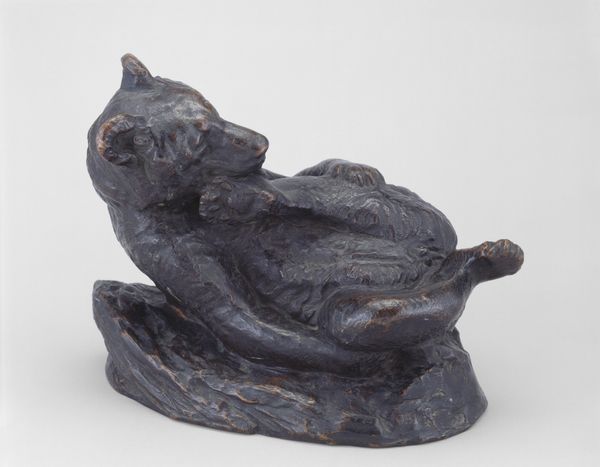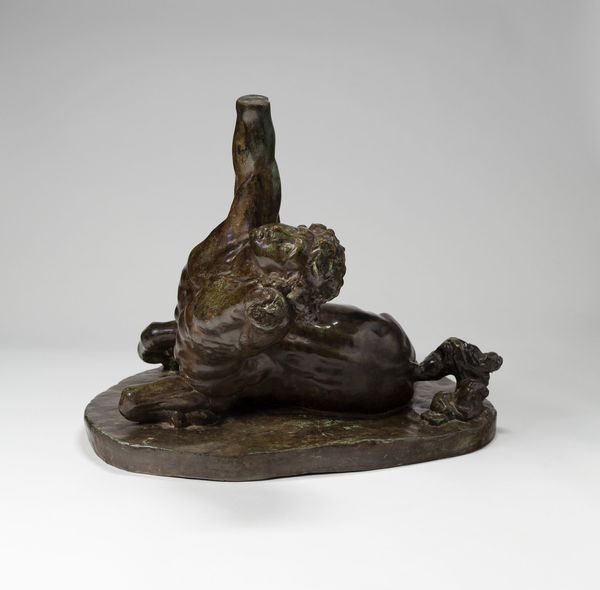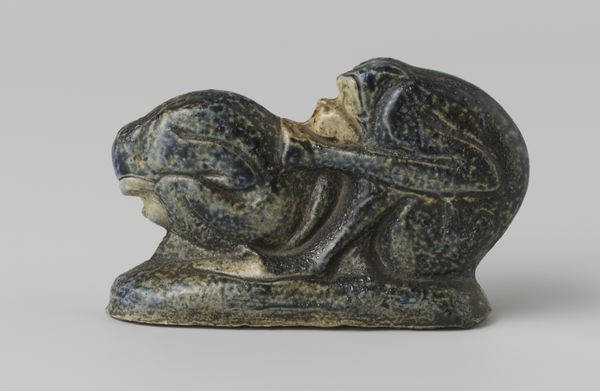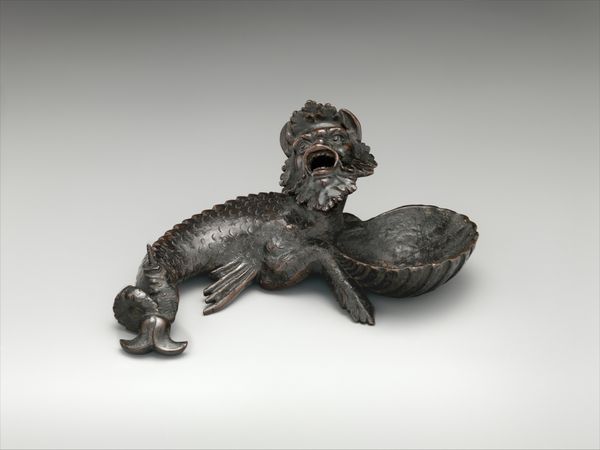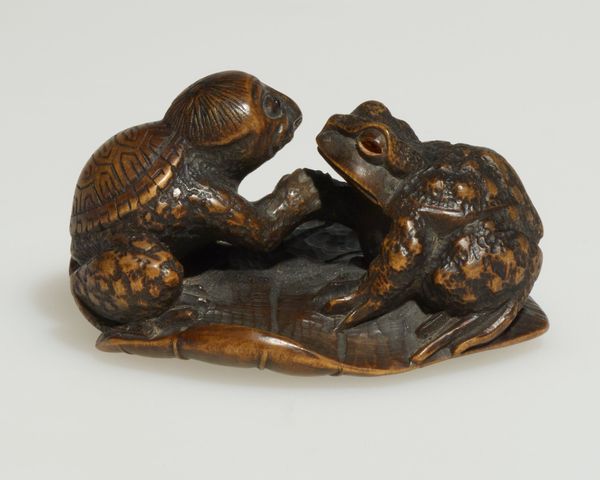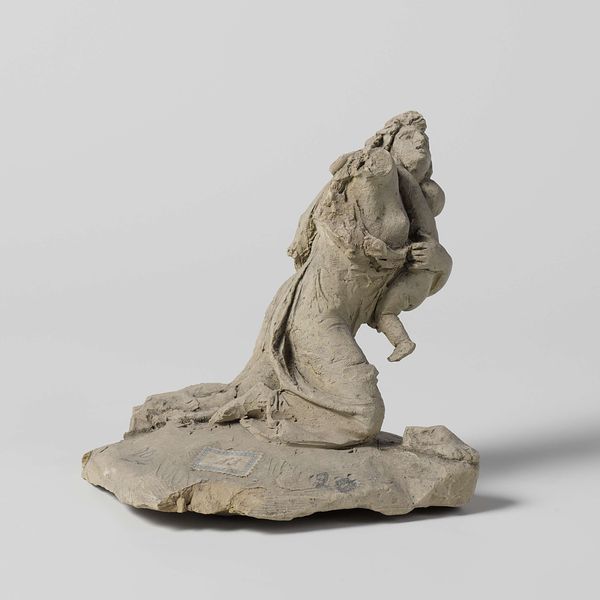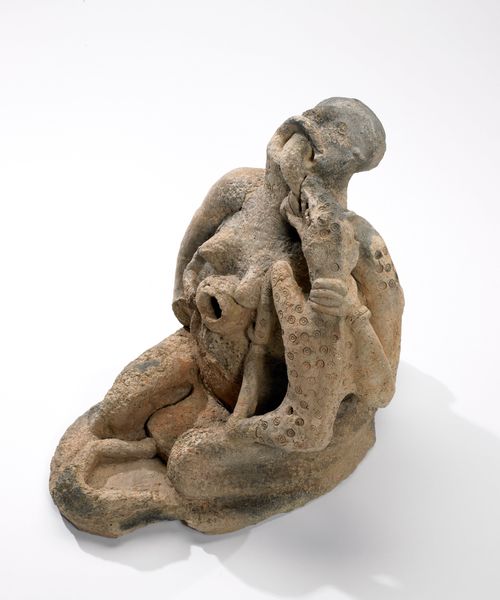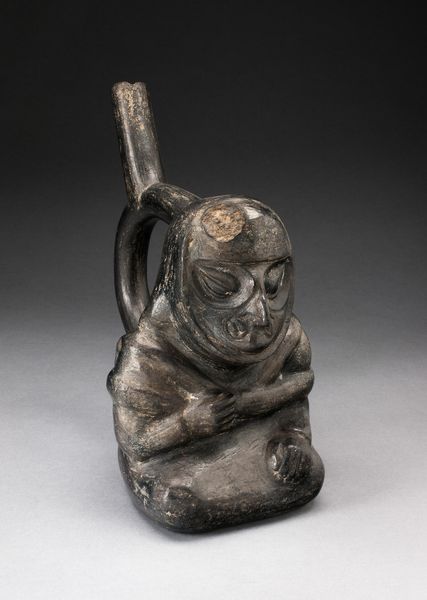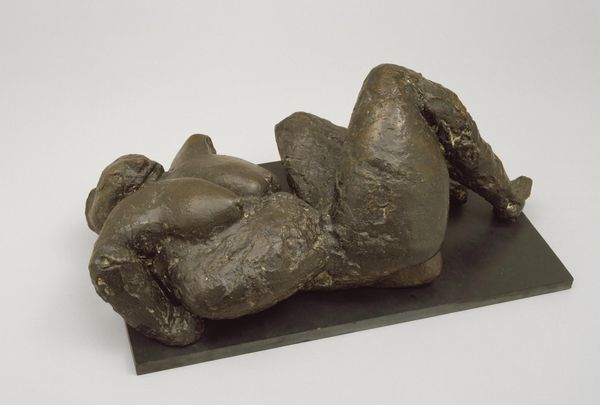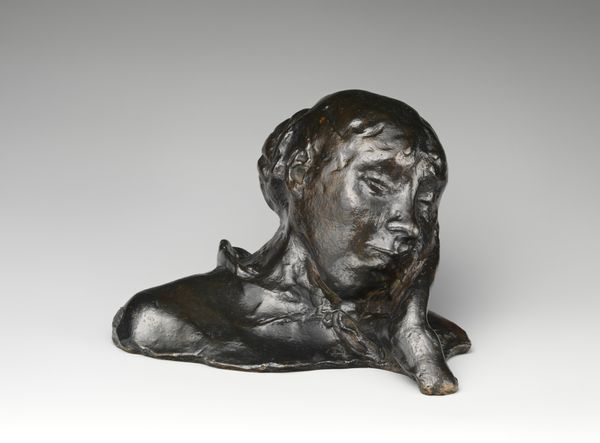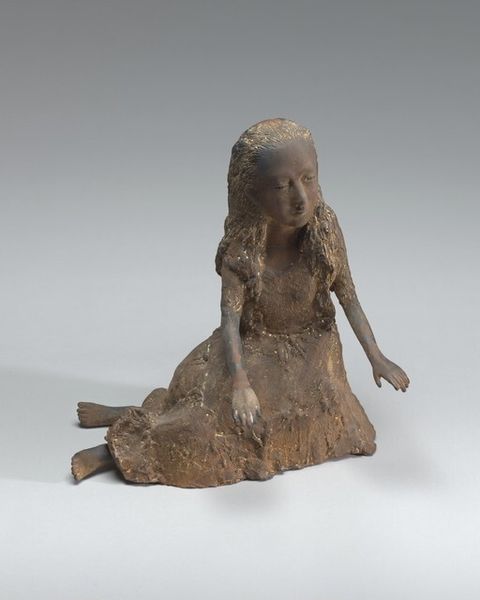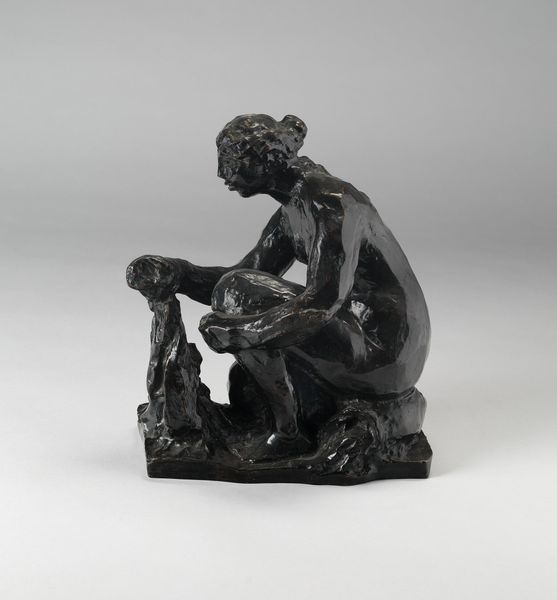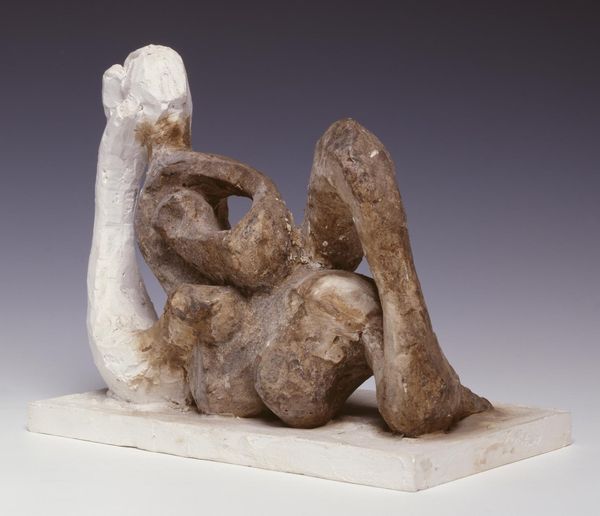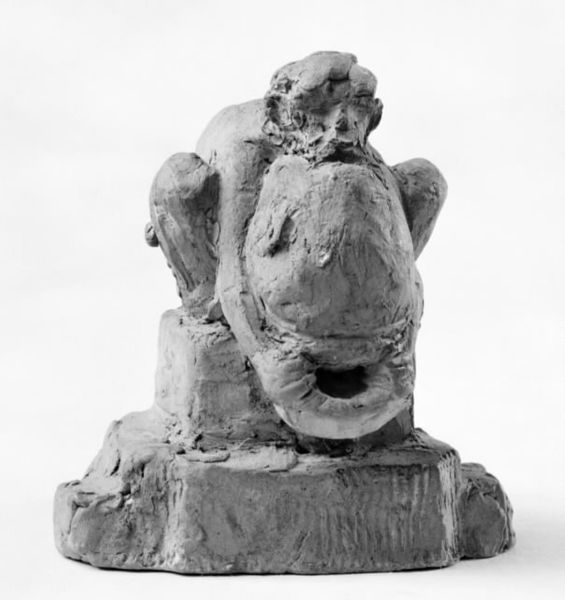
bronze, sculpture
#
statue
#
sculpture
#
bronze
#
sculpture
#
romanticism
#
realism
#
statue
Dimensions: overall: 8.9 × 25.4 × 12.1 cm (3 1/2 × 10 × 4 3/4 in.)
Copyright: National Gallery of Art: CC0 1.0
Curator: Oh, this one always gets a reaction. The artist, Pierre-Jules Mêne, created "A Fox Holding a Dead Rooster" sometime in the 19th century. It's a bronze sculpture, and quite a striking piece. Editor: Definitely striking. It's… well, it's brutal, isn't it? The fox looks almost smug. And the rooster—poor thing looks completely defeated. I sense a victor-vanquished power dynamic which makes me uncomfortable. Curator: Mêne was known for his animal sculptures. There was this fascination with the natural world at the time, and capturing animals in bronze became quite popular, almost fashionable. He's immortalizing a specific, arguably cruel moment from nature’s playbook. It's less sentimental and more observational. Editor: Observational, yes, but observe how carefully it is staged. How is this "natural"? That rooster's wings are so delicately placed—almost artful in their stillness. Do you think Mêne is highlighting a class struggle maybe? Or rural versus urban power? Curator: Possibly. Romanticism and Realism often blended during this period. There's the romanticized view of nature, sure, but Mêne also depicts the harsh realities of survival. It’s about the food chain, who has power and who doesn’t. He’s also presenting an inherent relationship between death and nourishment in the circle of life. Editor: But making it "art" changes it, right? The bronze gives it weight, literally and figuratively. The small details of the fur, the feathers are immortalized. I find myself questioning if this is just documenting or if it serves to legitimize predation. Curator: Art often invites such questions. The texture of the bronze lends a sort of permanence, so this struggle feels timeless. Editor: Perhaps the value isn't in what the work seems to obviously portray, but that it can stir those very dialogues. That it captures us and allows the opportunity to ask important ethical and cultural questions about life. Curator: Precisely. That's why Mêne’s fox continues to provoke thought. He has offered the tools—you construct the conclusion.
Comments
No comments
Be the first to comment and join the conversation on the ultimate creative platform.
